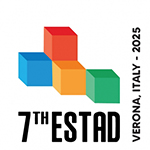Speaker
Description
The addition of highly reactive ferro-coke can lower the temperature of the thermal reserve zone (TRZ), which improves shaft efficiency in a blast furnace. A better understanding of the link between microstructure, microtexture and strength in ferro-coke is needed to optimise the blend composition and maximise strength.
This study investigates the microstructure and microtexture of ferro-coke using 3D micro-computed tomography (Micro-CT), and an automated reflected light microscope. The effect of iron ore and direct reduced iron (DRI made from hydrogen reduction of Australian iron ore) on the strength of ferro-coke was analysed. The impact of an Australian high fluidity coal and coal tar pitch (CTP) as binders on ferro-coke structure and strength was also investigated.
The results show that the strength of ferro-coke mostly depends on the quality of bonding between the reactive maceral derived component (RMDC) structure and inert maceral derived component (IMDC) structure. The porosity is a proxy for the thermal plasticity of the blend. The addition of iron ore without binder decreased both the porosity and strength. This was attributed to the decreased fluidity of the blend in the presence of iron oxides, resulting in poor bonding between RMDC, IMDC, and iron particles. The microtexture results showed that iron ore decreased the anisotropy. Conversely, the fluidity of the blend was preserved with DRI in the blend, thus allowing for the formation of ordered carbon structures. It was postulated that the reduction in fluidity was caused by the presence of iron ore in the oxide form and its reduction during carbonisation which promoted the oxygen cross-linking reactions. The addition of CTP improved the porosity and strength of ferro-coke regardless of the iron source. High fluidity coal did not provide sufficient binding in the presence of iron ore, however, when blended with DRI, a strong ferro-coke was formed.
